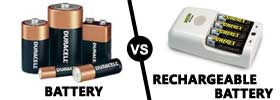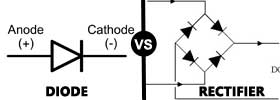Difference between Bypass Surgery and Angioplasty
Key Difference: A Bypass surgery is used for the treatment of narrowed arteries. A detour or a bypass is created around the section of a blocked artery. This new pathway is created by using a graft. An Angioplasty is a procedure in which coronary arteries are unblocked. An angioplasty procedure does not require an open heart surgery.
 Arteries may be clogged with fatty material known as ‘plague’. This plague starts assembling in the inner walls of the arteries and the arteries become narrow. A bypass surgery is used for the treatment of narrowed arteries. A detour or a bypass is created around the section of the blocked artery. It is generally related with the coronary artery bypass graft surgery, in which a blood vessel is taken from chest, log or forearm and is grafted to the coronary artery. This new pathway is created by using a graft. A graft used in the process can be either natural or artificial. A natural graft consists of a portion of the veins, whereas an artificial graft can be a man-made synthetic tube that works as vein.
Arteries may be clogged with fatty material known as ‘plague’. This plague starts assembling in the inner walls of the arteries and the arteries become narrow. A bypass surgery is used for the treatment of narrowed arteries. A detour or a bypass is created around the section of the blocked artery. It is generally related with the coronary artery bypass graft surgery, in which a blood vessel is taken from chest, log or forearm and is grafted to the coronary artery. This new pathway is created by using a graft. A graft used in the process can be either natural or artificial. A natural graft consists of a portion of the veins, whereas an artificial graft can be a man-made synthetic tube that works as vein.
The surgery is most generally performed on the coronary arteries in the heart, the femoral arteries in the groin or the popliteal arteries behind the knee. The graft is attached above and below an obstructed artery. Blood starts streaming though the new graft vessel, and therefore provides the essential oxygen and nutrients. In the process, a detour or bypass for the flow of blood for the arteries is made therefore, the process is termed as a bypass surgery.
.jpg) Angioplasty is a type of PCI (Percutaneous Coronary Intervention). Angioplasty refers to a non-surgical procedure that is used to open the blocked heart arteries. It is generally performed to treat the patients suffering from cardiovascular diseases. The procedure improves blood flow in the arteries and veins of the body. In the procedure known as balloon angioplasty, imaging techniques are employed to guide a balloon tipped catheter which is a long and thin plastic tube, into the artery or vein. The catheter is then made to reach the vessel which is narrow or blocked. The balloon is inflated so that the vessel opens up. After the successful opening of the vessel, the balloon is deflated and finally removed. The procedure may also involve implantation of a bare-metal or drug-eluting stent to assist in keeping the artery open.
Angioplasty is a type of PCI (Percutaneous Coronary Intervention). Angioplasty refers to a non-surgical procedure that is used to open the blocked heart arteries. It is generally performed to treat the patients suffering from cardiovascular diseases. The procedure improves blood flow in the arteries and veins of the body. In the procedure known as balloon angioplasty, imaging techniques are employed to guide a balloon tipped catheter which is a long and thin plastic tube, into the artery or vein. The catheter is then made to reach the vessel which is narrow or blocked. The balloon is inflated so that the vessel opens up. After the successful opening of the vessel, the balloon is deflated and finally removed. The procedure may also involve implantation of a bare-metal or drug-eluting stent to assist in keeping the artery open.
Comparison between Bypass Surgery and Angioplasty:
|
|
Bypass Surgery |
Angioplasty |
|
Definition |
A bypass surgery is used for the treatment of narrowed arteries. A detour or a bypass is created around the section of blocked artery. |
Angioplasty refers to a non-surgical procedure that is used to open blocked heart arteries. It is generally performed to treat patients suffering from cardiovascular diseases.
|
|
Used for |
Treatment of coronary arteries in the heart, the femoral arteries in the groin or the popliteal arteries behind the knee. |
Treatment of stable or unstable angina. Most people who are treated with angioplasty have a partial blockage in one coronary artery. |
|
Type |
Surgery |
Non-surgical procedure |
|
Risks |
Mentioning some of the risks involved in the procedure of Bypass Surgery.
|
Mentioning some of the risks involved in the procedure of angioplasty.
|
|
Potential Candidate for the surgery |
|
Patients possessing moderate to severe narrowing or blockage in one or more of blood vessels. |
|
Advantages |
|
|
|
Stay at hospital |
Comparatively longer |
Comparatively shorter |
|
Disadvantages |
|
|
|
Types |
|
|
Image Courtesy: en.wikipedia.org, timelymedical.ca









Add new comment